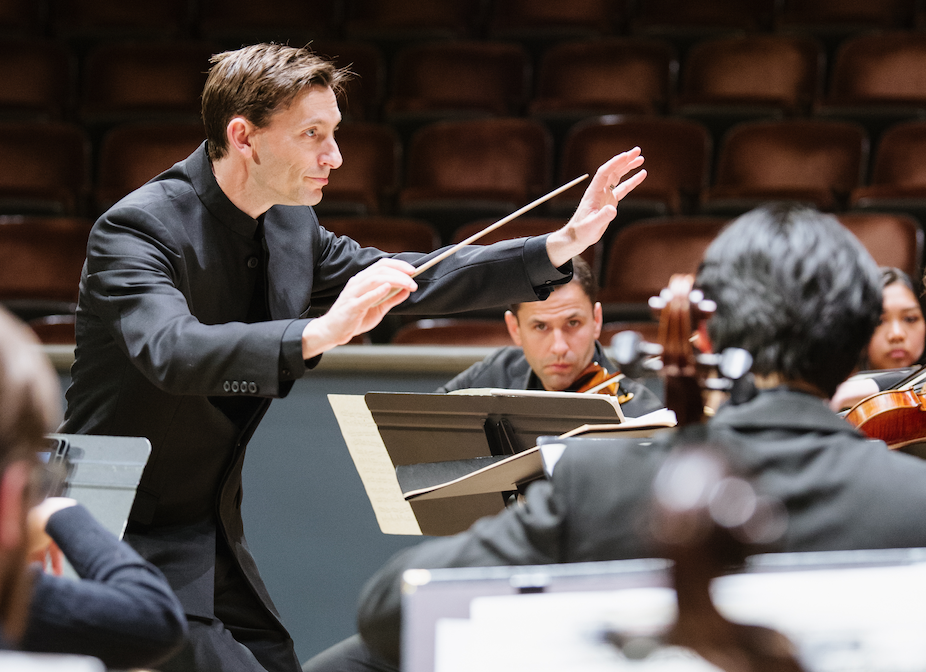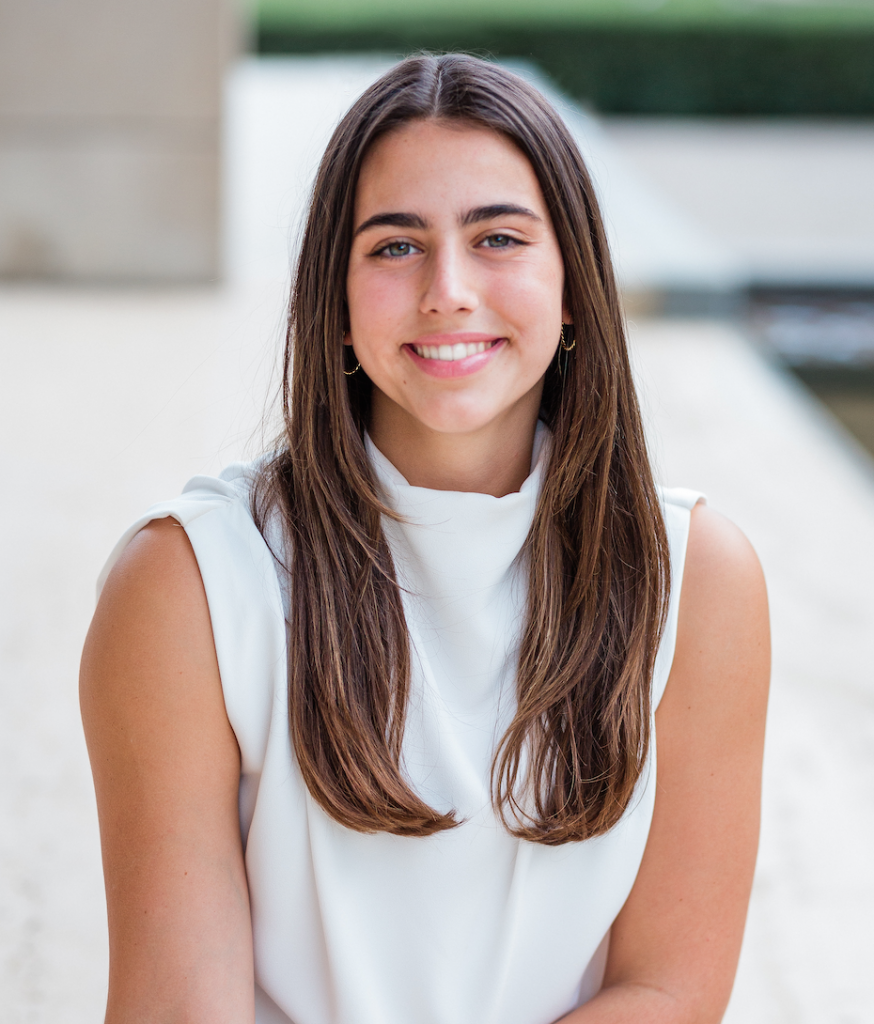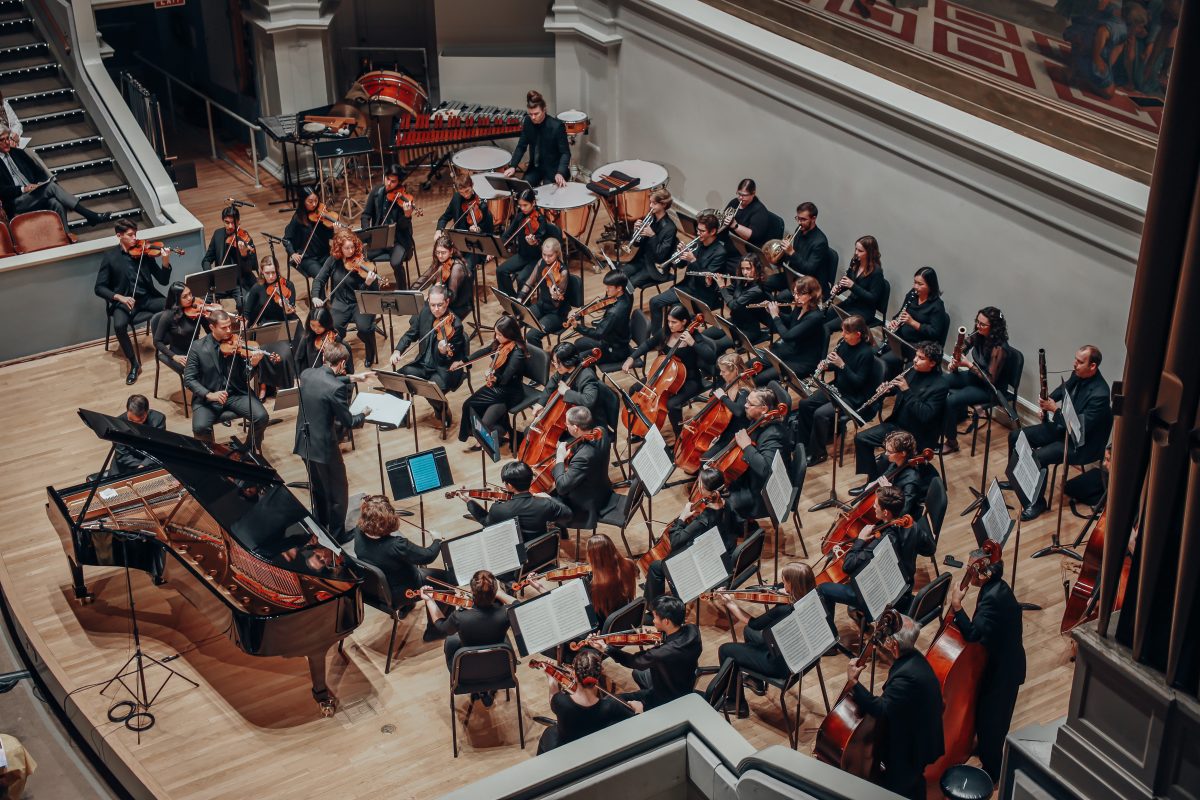When the schedule for this year’s 50th-anniversary season of the Charlottesville Symphony hits the desk of Elizabeth Roberts, the orchestra’s principal bassoonist eyes the first piece in the first show. It’s Beethoven’s Symphony No. 5, and she’s played it many, many times.
For professional players like Roberts, seeing Beethoven 5 on the setlist is like hearing an audience member request “Free Bird” at a Lynyrd Skynyrd show. The band has played it so often, it’s tough to muster up much enthusiasm.
But this is a 50th-anniversary program. Roberts and the other professionals in the Charlottesville Symphony’s principal seats know what Music Director Ben Rous is thinking. The celebratory season is a time not only to show off the nontraditional work they’ve been doing, but also an opportunity to call back to the masters who’ve come before them.
Plus, Charlottesville’s orchestra has a cheat code when it comes to playing the standards with passion: students.
“What we have are a lot of super-smart kids who are passionate and accomplished and really dedicated to improving,” Roberts says. “They are going to play with a level of energy when you put Beethoven 5 in front of them that the audience is going to sense. They’ve been waiting their whole life to play it.”
The Charlottesville Symphony at the University of Virginia is made up of not only professionals and students, but also community members. It’s a unique construction that’s shared only by two or three other orchestras in the United States. And the local ensemble has been doing it that way for a long time—half a century to be exact.
Tracing back
Even before the Charlottesville Symphony’s official founding in 1974, seeds had been planted in the form of a faculty group.
“We don’t know a lot about it, like the early conductors’ names,” says Janet Kaltenbach, executive director of the Charlottesville Symphony Society, a community nonprofit supporting the organization. “But the narrative of the earliest symphonic music at the university is even older than the symphony itself.”
Four music directors have led the Charlottesville Symphony over its 50 official years: Douglas Hargrave from 1974 to 1991, Carl Roskott from 1991 to 2006, Kate Tamarkin from 2006 to 2017, and Rous, who took the job in 2017.

Each director has also served as the orchestra’s primary conductor, a job that requires more than simply dancing a baton in front of the musicians. The directors oversee the roster, select the music for each season, and bring their own style and energy to the way classical music is translated for the audience.
“Orchestral music is a re-creative art,” Tamarkin says. “The composer needs a partner, an interpreter. Every conductor adds their understanding of the composer and the time when it was written. And they add something else very important, which is their temperament.”
When Hargrave took the lead in 1974, he directed a group of 50 musicians. The orchestra began its subscription series in 1975. Roskott brought with him an impressive resume and bolstered the orchestra’s reputation. At the time, the symphony included six professional musicians as principals. When Tamarkin took over in 2006, 16 principals were on the roster.
Tamarkin again raised the bar in terms of experience as a director and conductor, leading the organization for a decade. In May 2017, Rous uprooted from Norfolk as resident conductor at the Virginia Symphony to move to Charlottesville.
Today, the Charlottesville Symphony is one of the primary public-facing arts organizations at the University of Virginia, according to Jody Kielbasa, UVA vice provost for the arts. “Along with the two museums, the Virginia Film Festival and the theater festival, these organizations have a long history with the university, but more broadly with the Charlottesville community,” he says. “They serve as a bridge to the community.”
A modernist turn
When Rous took the conductor’s baton from Tamarkin, he says he came into a healthy organization. His experience with other national orchestras had taught him that professional groups all share at least one flaw. Professionals, he says, treat playing orchestral music as a job by definition.
Rous immediately felt that the Charlottesville Symphony, with its focus on teaching students to play as well as professionals, had a different air, a more contented air than he’d ever experienced. “We had a great performance culture and a really committed, loyal audience,” he says.
Still, Rous wanted to take the symphony in a new direction. According to Tamarkin, that was expected. As part of the search team seeking her replacement, she wanted someone who would be as different from her as possible.
Rous’ intensity and willingness to experiment with new forms, to take orchestral music to the edge of what people think it can be, fit the playbill. “I decided I could trust this community to be curious along with me, and I made a little bit of a leap of faith that I could be my honest, curious self when choosing what music to program,” he says.

The result is an orchestra that, in addition to the standards, features music by unfamiliar composers, arrangements listeners have never heard before, and collaborations with novel artists. Last spring, Rous invited drummer, percussionist, and composer JoVia Armstrong to join the Charlottesville Symphony on her cajon drumset. Armstrong, whose own music draws on techno, future soul, hip-hop, and chamber jazz, was a hit. After the performance, concertgoers and players alike told Rous the symphony should feature Armstrong in every show.
Under Rous, the Charlottesville Symphony has also featured an afro-futurist improv jazz flutist, a standard jazz quintet, and music produced from the sound of melting glaciers.
This season, the line-up will include rapper A.D. Carson during the March 22-23 shows which feature & metaphors commissioned from him for the anniversary season, Mozart’s Requiem and Barber’s Adagio for Strings.
“The overarching goal I have is to expand on what people can get out of an orchestral concert—not just what sounds we are making, but what ideas we can represent, what societal issues we can confront,” Rous says.
Looking to the future
Taylor Ledbetter, like so many middle-class American kids, grew up taking piano lessons. In sixth grade, when many students are first introduced to band instruments—some influenced by programs like the Charlottesville Symphony’s own youth outreach efforts—Ledbetter began playing the flute. She took to it and joined her high-school symphony orchestra in Fort Worth, Texas.
When Ledbetter looked at colleges, she knew she wanted to continue playing music while not compromising her education. The University of Virginia was the perfect fit, in no small part because of the Charlottesville Symphony.
Ledbetter has since taken up the piccolo, with help from UVA professor and Charlottesville Symphony principal flute player Kelly Sulick, and joined the orchestra on the smaller instrument for the spring show last season. This year, she’ll play in the February show featuring Prokofiev’s Romeo and Juliet.
Ledbetter’s story isn’t unique among the hard-charging, intellectually minded students who make up the youngest portion of the Charlottesville Symphony. But symphonic music isn’t for everyone, especially those who’ve never seen it live before. According to Tamarkin, most folks who see it even once come to love it.

If the Charlottesville Symphony wants to keep playing for another 50 years, it has to continue to put people in the seats. One way it does that is through education, from the organization’s youth programs up through the students who learn to play pieces like Beethoven’s 5th alongside professional musicians and community members.
According to Concertmaster Dan Sender, the educational structure of Charlottesville Symphony rehearsals is unlike any other experience for young players. While Sender admits “first rehearsals are the worst” as the students sit down in front of a new piece of challenging music, the opportunity to play alongside professionals and accomplished community members in their section brings the students along quickly.
“We develop a language to coach and critique our section play,” Sender says. “Could you imagine how good a student’s essay would be if the teacher was sitting next to them and helping them with each sentence? The final product would be outstanding.”
The Charlottesville Symphony’s efforts are paying off. After five decades of continuous operation and overcoming the COVID-19 pandemic, the local audience remains strong.
“It has become a real challenge for many orchestras,” says community member and clarinetist Rick Kessel, who’s played in multiple national orchestras over the past 20 years. “The fact that this community comes out to support us is just amazing, and we see a lot of young faces in the audience. That is why Charlottesville is so unique. They pack the house.”
Symphonic riches
The Charlottesville Symphony at the University of Virginia is the longest-running classical music organization in the city (by a margin of five years), but it’s not the only place to get your orchestra on.
Waynesboro Symphony Orchestra Waynesboro Symphony Orchestra, the 2021 American Prize winner for Best Community Orchestra Performance and 2024 recipient of the Shenandoah Valley’s Circle of Excellence in the Arts Award, plays an extensive season of classical music at the First Presbyterian churches in Waynesboro and Staunton.
Albemarle Symphony Orchestra Formerly the Crozet Community Orchestra, the Albemarle Symphony Orchestra typically has around 70 players on the roster. Launched in October 2013 by co-founders Denise Murray and Philip Clark, the orchestra plays two to four shows per season at churches and schools in Crozet and Charlottesville.
Youth Orchestras of Central Virginia In addition to the area’s award-winning high school orchestras, the Youth Orchestras of Central Virginia, founded 45 years ago, play a full season of classical concerts. The orchestras, headquartered in Charlottesville, feature players from elementary, middle, and high schools around
central Virginia. The two full symphony orchestras, string orchestra, and chamber music club draw public, private, and homeschool students from the surrounding counties to participate in their annual programs.

Other organizations Still haven’t reached your cap on classical? The Charlottesville Chamber Music Festival held its 25th annual show in September and shows no signs of stopping heading into next year. Charlottesville Classical, a service of WTJU and available for streaming at charlottesvilleclassical.org, plays the full classical repertoire, from medieval chants to modern compositions, 24 hours a day, seven days a week. The Tuesday Evening Concert Series, founded in 1948, features shows on semi-monthly Tuesdays in Old Cabell Hall. And go off the orchestral path with Three Notch’d Road—The Virginia Baroque Ensemble’s performances of historical repertoires offered in a subscription series, or the Cville Band, one of the oldest amateur community bands in the nation, which performs locally several times a year.
